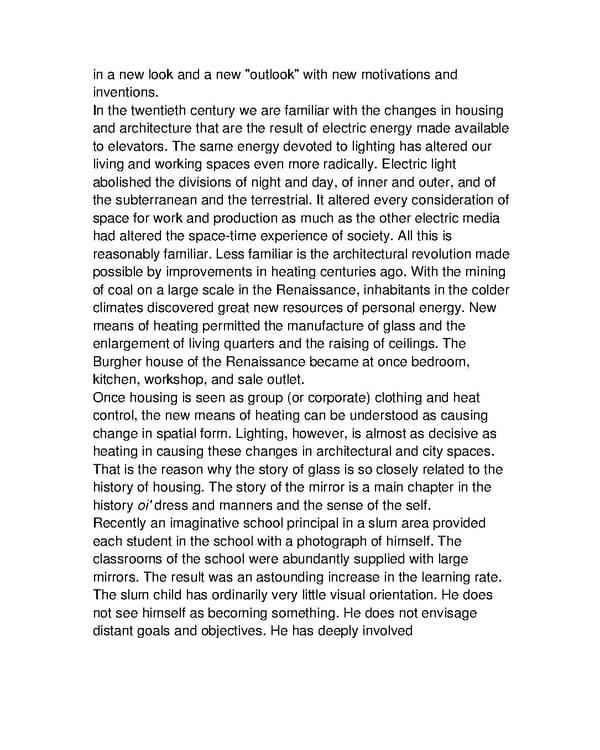in a new look and a new "outlook" with new motivations and inventions. In the twentieth century we are familiar with the changes in housing and architecture that are the result of electric energy made available to elevators. The same energy devoted to lighting has altered our living and working spaces even more radically. Electric light abolished the divisions of night and day, of inner and outer, and of the subterranean and the terrestrial. It altered every consideration of space for work and production as much as the other electric media had altered the space-time experience of society. All this is reasonably familiar. Less familiar is the architectural revolution made possible by improvements in heating centuries ago. With the mining of coal on a large scale in the Renaissance, inhabitants in the colder climates discovered great new resources of personal energy. New means of heating permitted the manufacture of glass and the enlargement of living quarters and the raising of ceilings. The Burgher house of the Renaissance became at once bedroom, kitchen, workshop, and sale outlet. Once housing is seen as group (or corporate) clothing and heat control, the new means of heating can be understood as causing change in spatial form. Lighting, however, is almost as decisive as heating in causing these changes in architectural and city spaces. That is the reason why the story of glass is so closely related to the history of housing. The story of the mirror is a main chapter in the history oi' dress and manners and the sense of the self. Recently an imaginative school principal in a slum area provided each student in the school with a photograph of himself. The classrooms of the school were abundantly supplied with large mirrors. The result was an astounding increase in the learning rate. The slum child has ordinarily very little visual orientation. He does not see himself as becoming something. He does not envisage distant goals and objectives. He has deeply involved
 Understanding Media by Marshall McLuhan Page 141 Page 143
Understanding Media by Marshall McLuhan Page 141 Page 143